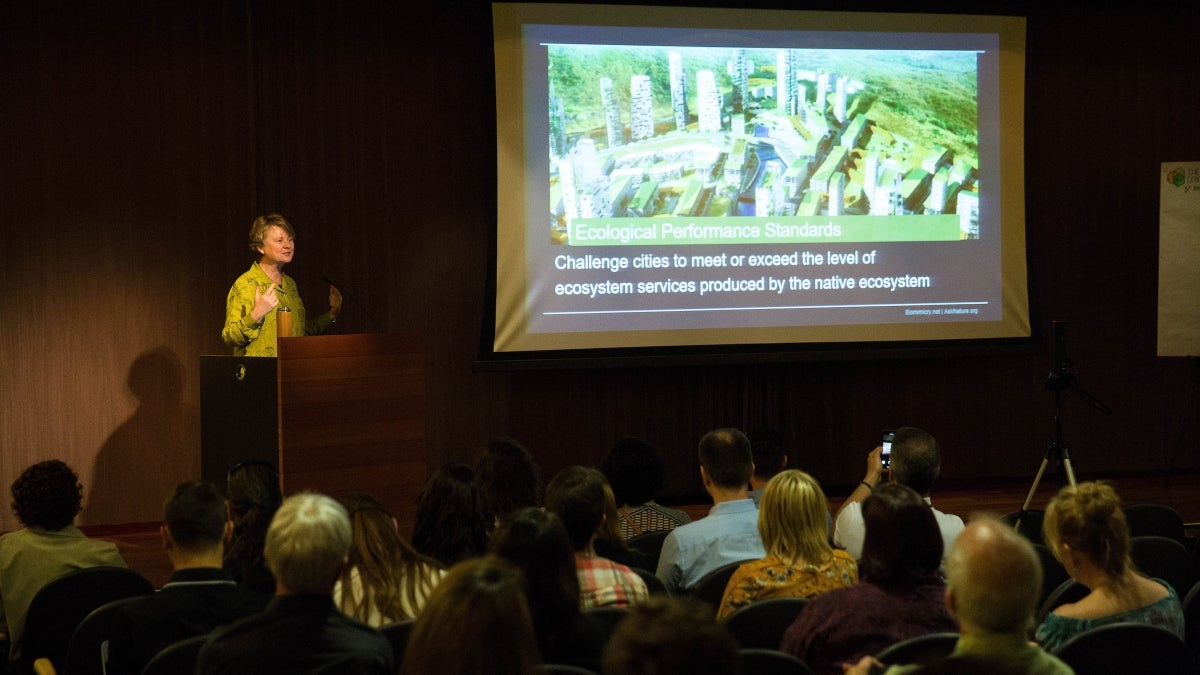Cities and the natural world seem to be at opposite ends of a spectrum, at least according to the dominant thinking of city dwellers like Woody Allen and mankind in general for the past 11,000 years: Keep the wolves out and the Thai takeout close.
Country folks, on the other hand, readily extol the virtues of clean air, water, greenery and birdsong.
But what if cities were fundamentally indistinguishable from the wildland next door? What if buildings were made of carbon-sequestering concrete and released air three times cleaner? What if streets were made of permeable asphalt and birds nested in plants growing up the sides of skyscrapers?
That’s the idea behind the Generous Cities Summit hosted by the Biomimicry Center at Arizona State University.
The two-day event, which kicked off Thursday morning, is bringing together sustainability scientists, urban designers, architects, ecologists, software developers, and government and business decision-makers to consider how cities can take inspiration from the natural world and produce the same benefits nature does.
Our current building stock already consumes 40 percent of all global energy used, and those buildings are responsible for nearly one-third of the world’s greenhouse gas emissions.
“Can you be in dense groups and not destroy the ecosystem?” asked keynote speaker Janine Benyus, adjunct faculty in the School of Sustainability and biomimicry advocate.
Images of cities draped in greenery and shining with water features flashed across the screen behind her.
“We’re part of the natural world, so our part has to function too,” Benyus said. By function she meant filter and store water, sequester carbon, pollinate, cool, and shelter wildlife, among other tasks.
Using “nature as measure and model,” humans can become producers of ecosystem services, Benyus said.
It’s going to mean a change in urban design and architecture — and a change in worldview, she said.
“How many ecological functions can we get per square foot? … How many services can we meet? You design into that framework.”
Top photo: Cofounder of Biomimicry 3.8 Janine Benyus addresses the audience during the Generous Cities Summit hosted by the Biomimicry Center at the ASU Tempe campus on April 19. Photo by Deanna Dent/ASU Now
More Environment and sustainability

Researcher works on changing people's mindsets to fight climate change
Meaningful action to heal the climate requires a complete shift in the way people think and perceive each other, according to an expert on social transformation who spoke at Arizona State University…

NOAA, ASU offer workshop to bridge ocean exploration, education
Oceans are vital to sustaining life on Earth, as they produce over half of the oxygen we breathe and play a crucial role in regulating the planet's climate. They also support a diverse array of…

A united front for sustainability and the economy
When four leaders of esteemed learning institutions and the mayor of Phoenix gather in one location at the same time, it’s a tip-off that something big is going down.When they’re joined by visionary…
